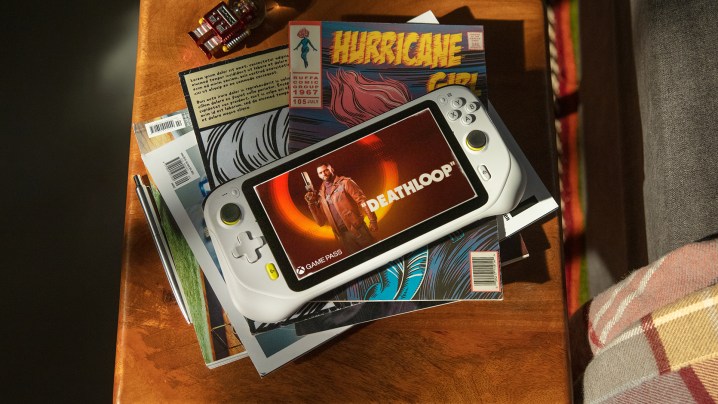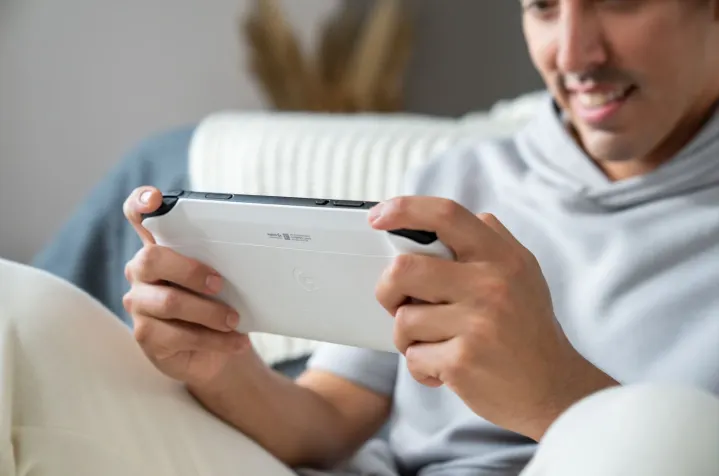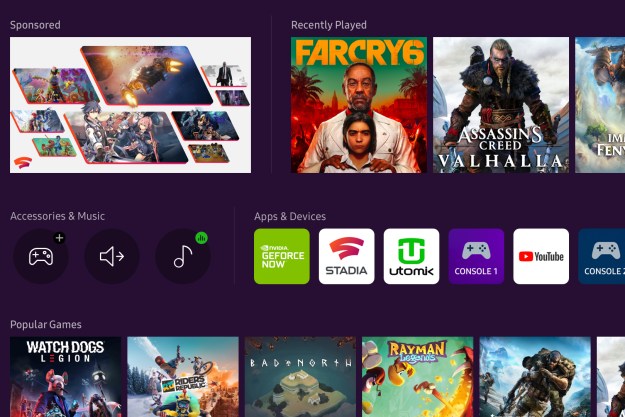Although I can be tough on cloud services that have faults, I actually do enjoy cloud gaming on Google Stadia and Xbox Game Pass Ultimate quite a bit, and I’m excited about the technology’s potential for both players and developers. Currently, most of my cloud gaming takes place on my phone, but Logitech and Tencent Games want me to start playing cloud games on a new device. In October, the Logitech G Cloud Gaming Handheld starts rolling out, and it hopes to become the way to play cloud games.
During a hands-off preview of the device, Logitech certainly delivered on highlighting an Android-powered device with two native cloud gaming apps that players can use to enjoy games with a Wi-Fi connection. At $350, though, it feels like a solution for a niche usage problem that similarly priced devices already solve. I could see myself enjoying this device if I wanted to stream a video game from my bed or a room without my TV and consoles. Unfortunately, it seems outclassed by just the ability to stream games on a midrange-or-better phone, something anyone reading this can likely do already.

What is the Logitech G Cloud Gaming Handheld?
From a technical perspective, the Logitech G Cloud Gaming Handheld contains specs that wouldn’t feel out of place on a mid-range mobile device. It features a Qualcomm Snapdragon 720G octa-core 2.3GHz CPU, as well as 4GB of LPDDR4x RAM and 64GB of internal storage that people can expand with an SD card. The display is a 7-inch IPS multi-touch screen that displays at a 1080p resolution with a 60Hz refresh rate. Players can listen to audio through its stereo speaker, a 3.5mm stereo audio jack, or a Bluetooth 5.1 connection.
What sets it apart is that Logitech built the controllers into the device, giving it a Nintendo Switch-like look. It has the d-pad, analog joysticks, buttons, bumpers, and triggers expected of a modern controller, plus a Home button to bring players to the home screen and a “G button” that will access more system-specific settings. Players will be able to remap the controls however they wish, though. On top of that, players can expect the Logitech G Cloud Gaming Handheld to have haptics feedback, a gyroscope, a light sensor, and even a built-in stereo microphone with echo canceling and noise suppression support.
These aren’t top-of-the-line specs by any means, but Logitech made this choice because the device is made for gaming natively on the device. It also allowed them to get the device’s weight down to only 463 grams and give it a battery life of around 12 hours (it uses USB-C to charge), which has never been seen on a gaming handheld. Think of the Logitech G Cloud Gaming Handheld as an Android 11 tablet with built-in controllers, uniquely tailored UI, and access to native Xbox Cloud Gaming and Nvidia GeForce Now, and Google Play Store apps.

Logitech stresses that its real purpose is as a cloud gaming device, not a device to install a bunch of apps on natively. That said, only Xbox Cloud Gaming and Nvidia GeForce Now will have apps tailored to the handheld at launch;
Too niche to be worth it
Like the Qualcomm Snapdragon G3x, this is a proof-of-concept idea, but it doesn’t make sense for most casual users. In practice, this is a $300+ device for people who like to play cloud games through Xbox Game Pass Ultimate and Nvidia GeForce Now in their house but don’t want to do it through their PC, phone, or the Samsung Gaming Hub. Logitech seems to think that’s a big enough market, but to me, that seems like a very niche scenario that could struggle to find broad appeal.
People already have phones that can access cloud gaming services and can get an excellent mobile gaming controller like the Razer Kishi V2 for under $100. Even when it comes to hardcore cloud gaming fans, I don’t know how many will feel the need to get a device like this, especially when Logitech doesn’t run a cloud gaming service of its own. Logitech tells Digital Trends that the real advantages of the device are its lack of frequent notifications, weight, and its 12-hour battery life.
But even then, phones are reasonably light, you can turn notifications off, and the required Wi-Fi connection means you’ll never really be that far from a place to plug it in while playing. Its screen is good but not ultra-impressive, and the fact that

For some, the Logitech G Cloud Gaming Handheld might solve a particular problem and finally give them an easy way to immerse themselves in cloud gaming fully. Its controls and screen could also feel great to use once you go hands-on with it. That said, what I saw in this hands-off preview didn’t convince me that hardcore cloud gaming fans have much need for this device, especially when it’s not first-party, super technically impressive, or supportive of every significant cloud gaming app.
My opinion might change when I go hands-on, but right now, I’d still recommend those interested in cloud gaming put those $300 toward a Razer Kishi V2 and get a mid-range or flagship phone that can play lots of games natively and from the cloud. The Logitech G Cloud Gaming Handheld will cost $300 until October 17, when it will go up to $350. Currently, Logitech only plans to make the device available in the United States and Canada.
Editors' Recommendations
- Xbox has no plans to make its own handheld system, per leaked documents
- Microsoft pledges to bring Xbox PC games to Nvidia GeForce Now
- A Plague Tale: Requiem heading to GeForce Now with ray tracing
- Steam Deck vs. cloud gaming: How do they compare?
- Genshin Impact comes to GeForce Now in limited beta




